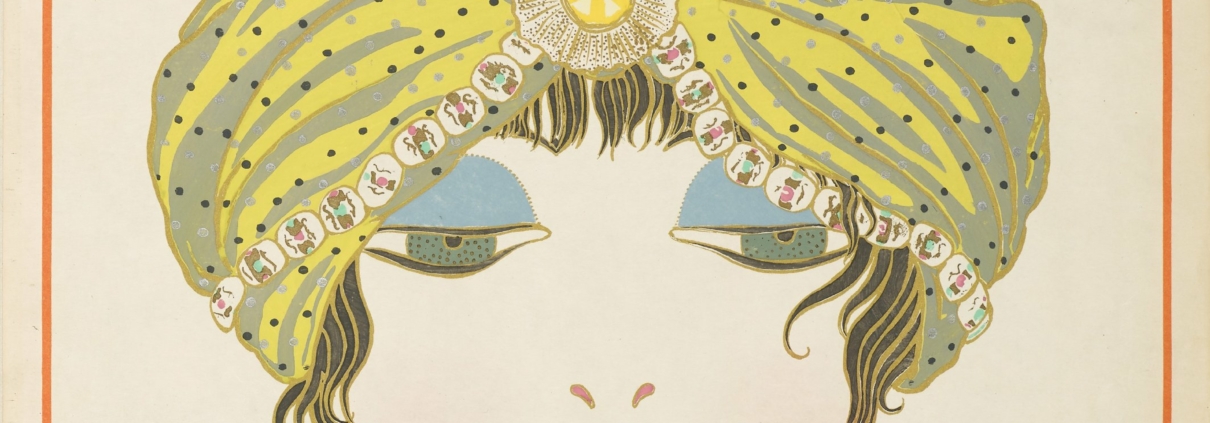Paul Poiret
Fashion is a party
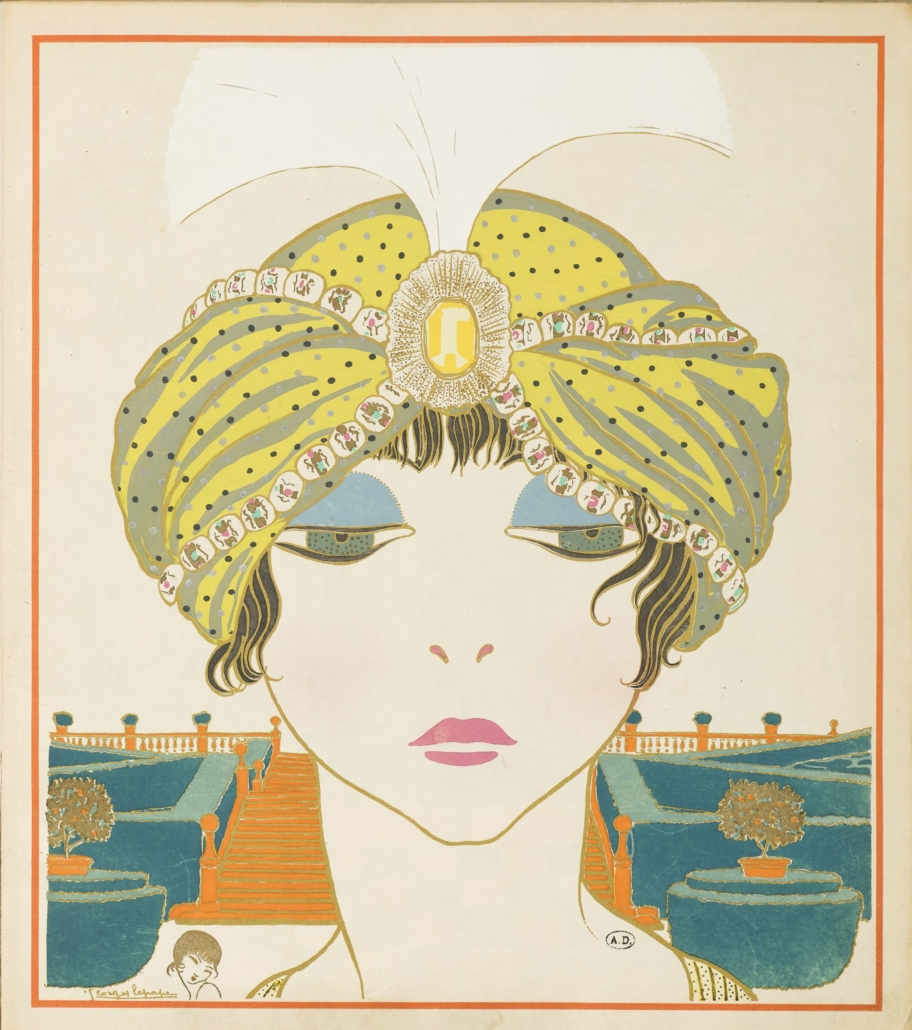
Paul Poiret, a key figure in Parisian haute couture at the beginning of the 20th century. Considered the liberator of the female body for having decorsetted it, Paul Poiret reinvented fashion.
“Paul Poiret, Fashion is a Celebration” offers an immersion into the designer’s rich universe, from the Belle Époque to the Roaring Twenties. It explores his creations in the fields of fashion, decorative arts, perfume, celebration, and gastronomy. Through 550 works (clothing, accessories, fine arts, and decorative arts), the exhibition highlights Paul Poiret’s lasting influence and reveals the breadth of his creative genius. A fascinating journey to meet a man whose legacy continues to inspire contemporary fashion designers, from Christian Dior in 1948 to Alphonse Maitrepierre in 2024.
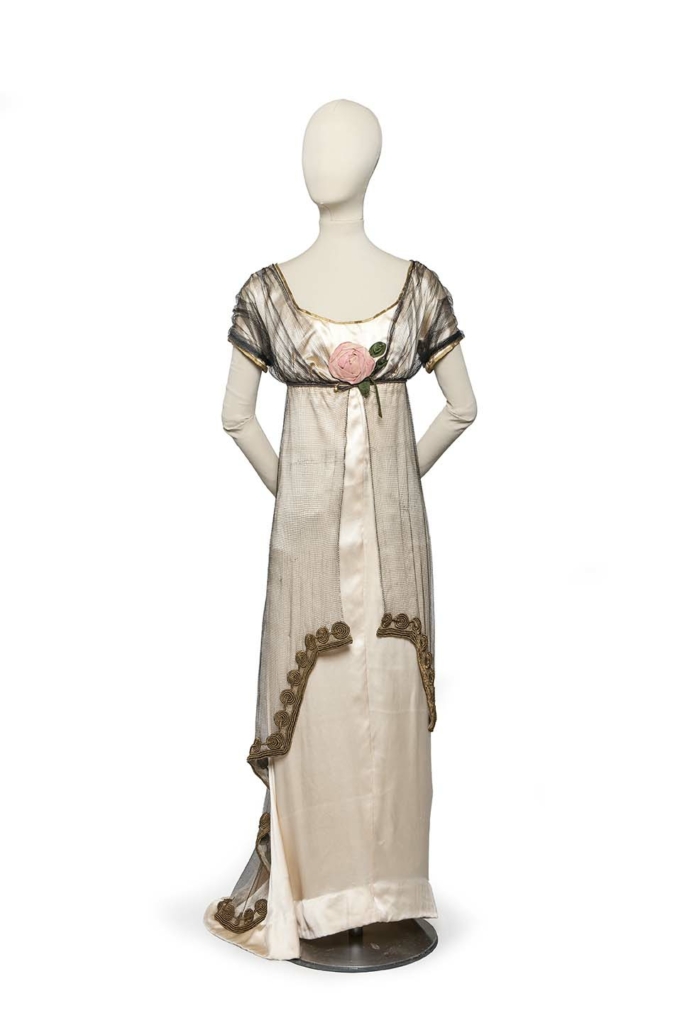
Born in Paris in 1879, Paul Poiret began his career as an apprentice in several couture houses. He trained alongside Jacques Doucet in 1898, then joined the house of Worth in 1901, then run by the two sons of the founder of haute couture. In these houses, Poiret observed and assimilated the rudiments of the couturier’s trade: contact with clients and teamwork. These experiences gave him the impetus to establish his own couture house in 1903. There, he defined a new aesthetic of the female body, in movement and without constraints, breaking with the S-shaped silhouette of the beginning of the century. His simplified line is highly modern. This is evidenced by the Joséphine evening dress, a masterpiece of the 1907 “manifesto” collection, inspired by the Directoire. The waist is raised under the bust and held inside the dress by a slightly boned grosgrain ribbon. Poiret uses lightweight fabrics and bright, acid colors. His color palette echoes that of Fauvism, a pictorial movement of the early 20th century that he particularly appreciates.
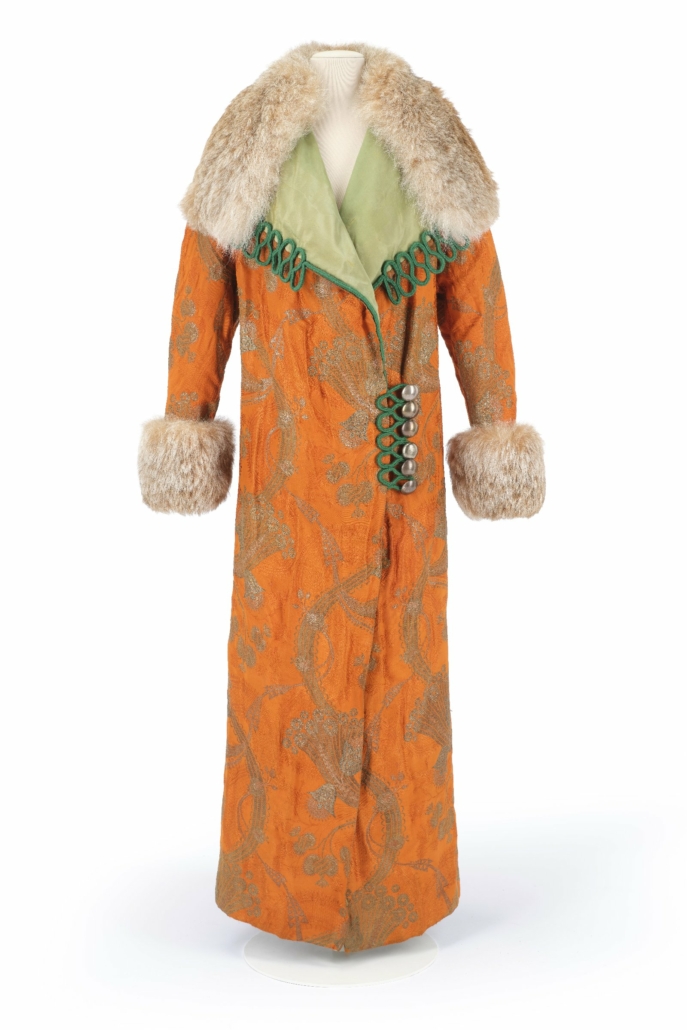
He had a wealthy and cultured clientele, eager for new things, and surrounded himself with innovative artists with whom he collaborated and collected (Paul Iribe, Raoul Dufy, Maurice de Vlaminck and Georges Lepape). After the First World War, during which he was mobilized, Poiret found inspiration again thanks to his travels and the parties he organized. The 1920s were marked by numerous expenses linked to his excessive lifestyle and the development of his companies (the fashion house, Maison Martine and Parfums de Rosine). He was forced to sell his fashion house in November 1924 and leave it permanently in December 1929. In 1925, he participated in the International Exhibition of Modern Decorative and Industrial Arts with his own funds: he chartered three barges on the banks of the Seine where he presented his entire universe (fashion, interior design, perfumes). This event is a financial drain.
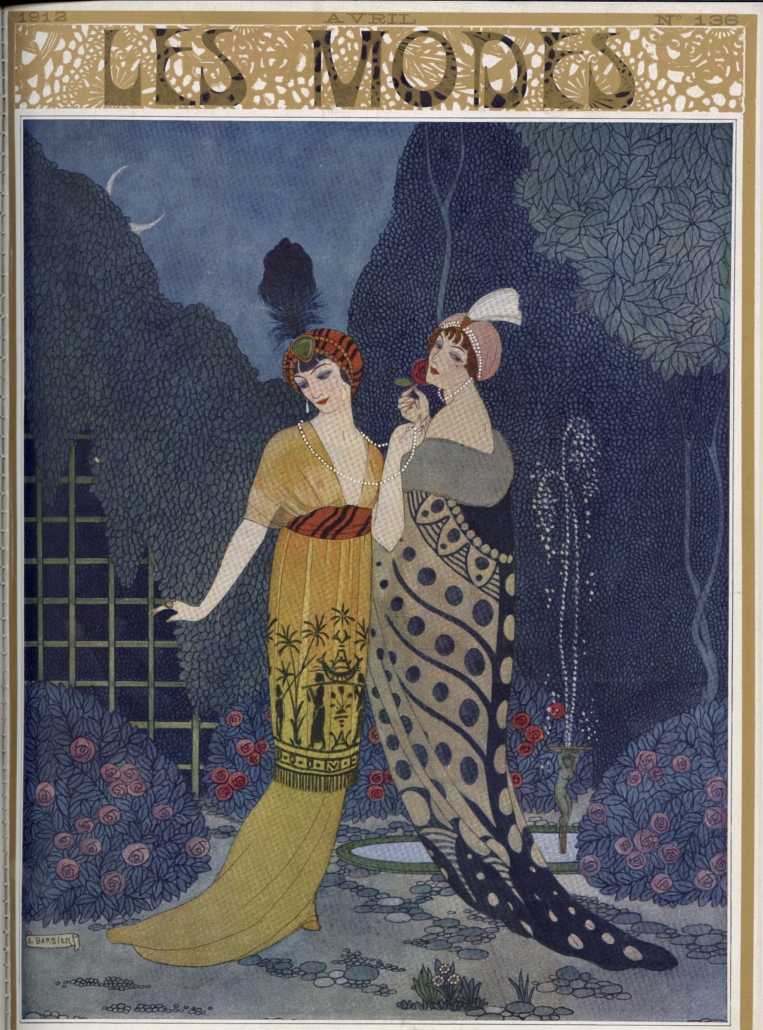
Chronological and thematic, the exhibition immerses the visitor in modern Paris in the first quarter of the 20th century. It highlights the beginnings of Paul Poiret’s career, retracing the foundations of his apprenticeship with Doucet and Worth. It gradually reveals his relationships and emphasizes his innovations. As we wander through the exhibition, we discover the multiple facets of the designer whose practice is more akin to that of an orchestra conductor than a simple couturier. The tour is punctuated by works by artists who accompanied Poiret throughout his career. Among them, the decorator and architect Louis Süe, who designed his fashion house on Avenue d’Antin. Poiret was a scout for young talent, supporting them and sometimes forming long-term friendships with them, such as Raoul Dufy. Their relationship gave rise to unique creations such as the La Perse coat (1911), whose cut was designed by Poiret and whose patterns were printed by Dufy.
Beyond artists, he rubbed shoulders with members of wealthy and cosmopolitan society, clients of major fashion houses, such as the American avant-garde collector and gallery owner Peggy Guggenheim.
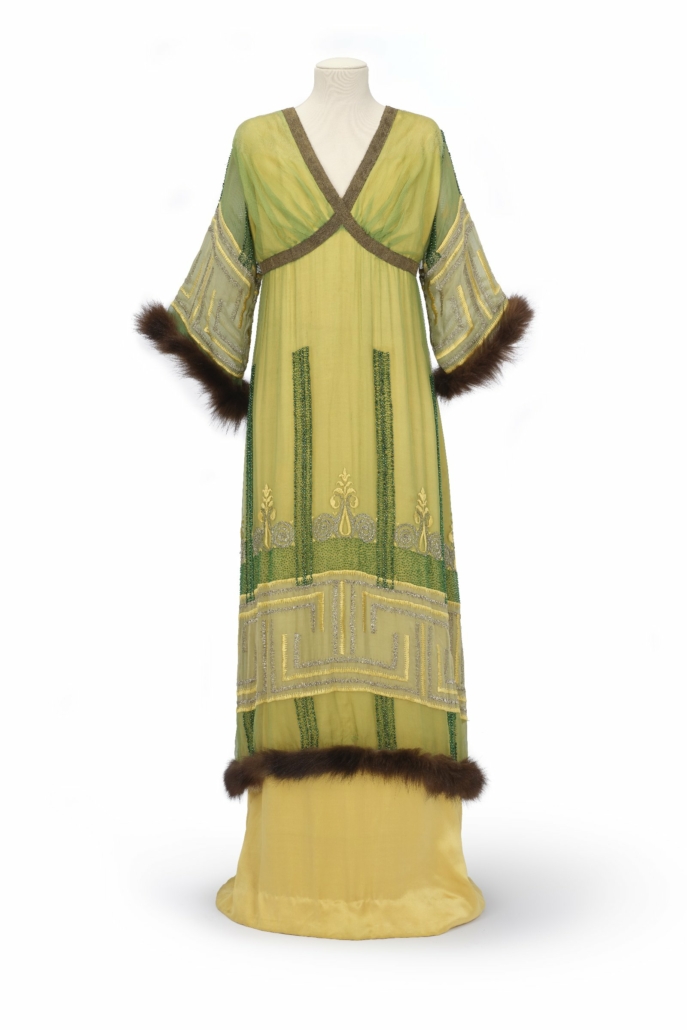
As early as 1909, Sergei Diaghilev’s Ballets Russes company performed in Paris. Poiret attended its performances, characterized by the fusion of the arts (music, dance, sets, and costumes). He was struck by their modernity, which he would later translate into his own performance. Photographs of the dancer Tamara Karsavina for Scheherazade were exhibited alongside a drawing by Léon Bakst, the ballet’s set designer. Poiret dressed dancers such as Isadora Duncan and Nyota Inyoka on stage.
His various travels throughout Europe and the Maghreb had a profound impact on him. He recorded some of these impressions in his memoirs, En habillant l’époque (1930), even mentioning his culinary and olfactory experiences. He reused the fabrics and embroidery he brought back from his travels in his fashion creations. He sometimes named his outfits after places he had visited: Marrakech, Toledo, etc.
The exhibition depicts the spectacular parties organized by the couturier through several costumes. The Festes de Bacchus and the famous Thousand and Second Night are evoked. Poiret invited his artist friends (Kees van Dongen and Dunoyer de Segonzac) along with the Parisian high society. These evenings were occasions for social interaction, widely reported in the press of the time. They also served as publicity events for his fashion house.
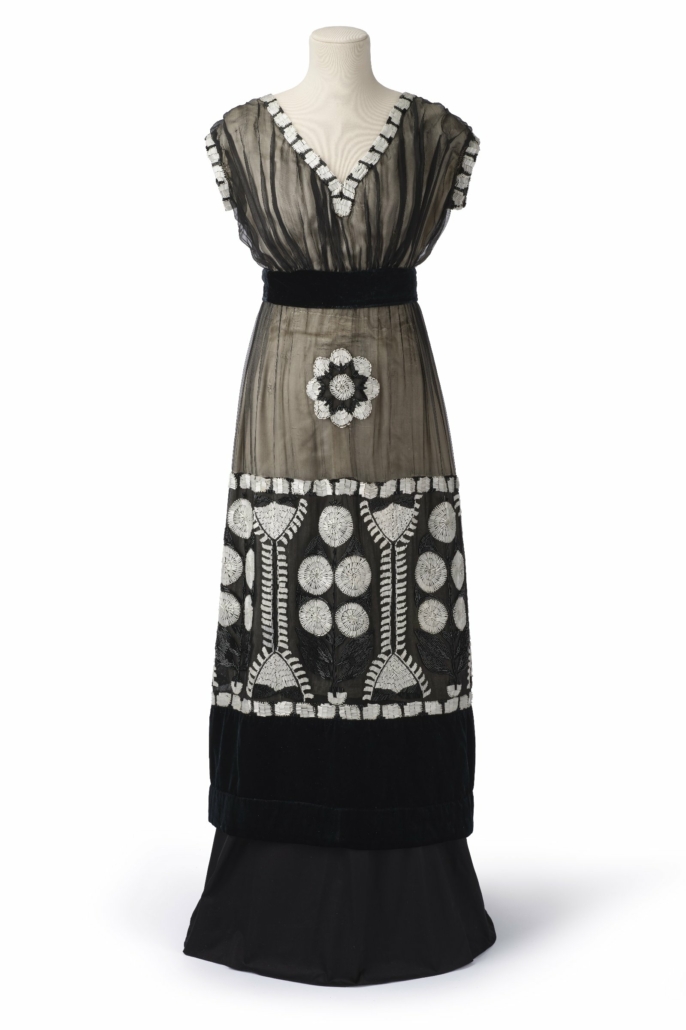
Poiret’s private life is revealed through photographs and family portraits. It features Denise Poiret, the couple’s children, and also the couturier’s sister, Nicole Groult. This space highlights precious moments from his personal life.
The exhibition also showcases Poiret’s many talents: in addition to being a couturier, he was a painter, actor, writer, gastronome, and musician. Like a conductor, Poiret aspired to create a complete work of art. His propensity to unite disciplines is reflected in the two companies he founded in 1911: Martine, dedicated to interior design and divided between a school and a workshop, and Les Parfums de Rosine. Indeed, for the creation of a perfume, he involved several talents. For example, for Arlequinade (1923), the bottle was designed by the artist Marie Vassilieff and made by the sculptor-glassmaker Julien Viard, and the juice was developed by the perfumer Henri Alméras.
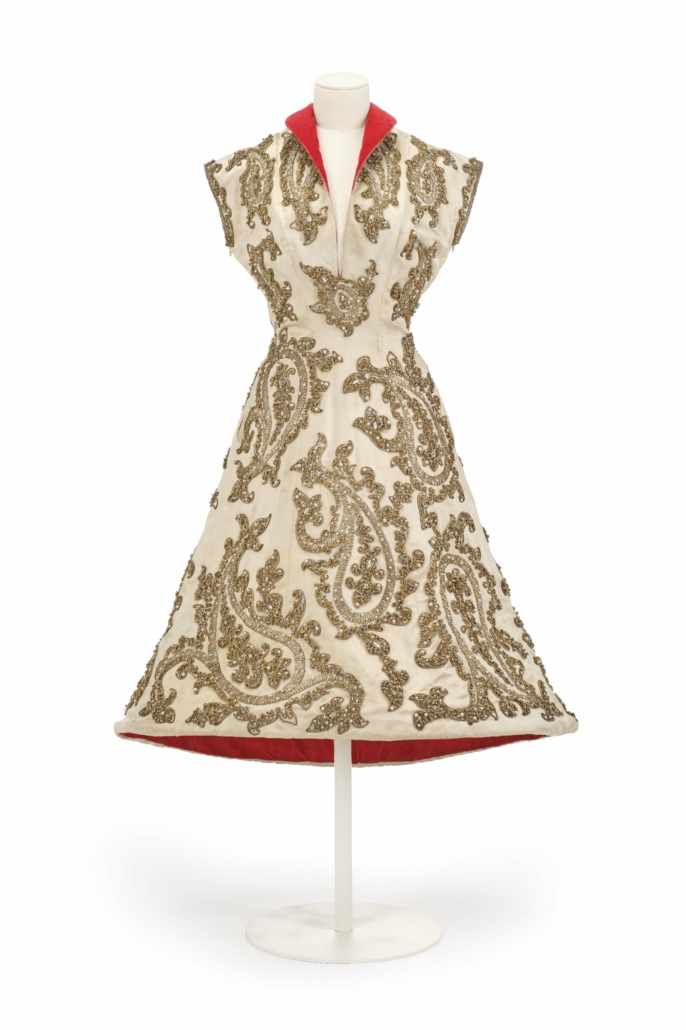
The exhibition continues with an evocation of his creations in 1920s cinema, for example in Marcel L’Herbier’s L’Inhumaine. It concludes with Poiret’s influence on couturiers and fashion designers of the 20th and 21st centuries. Couturiers such as John Galliano, Christian Dior, Christian Lacroix, and Yves Saint Laurent drew on orientalism, folklore, the festive spirit, and the performing arts. Like Paul Poiret, they embodied the role of artistic directors, giving fashion a narrative and spectacular dimension. Paul Poiret was the first couturier to call upon artists to work on his textiles, sets, illustrations, and other means of communication. He is therefore the pioneer of what is now called “collabs,” a common practice between fashion brands and artists since the early 2000s.

